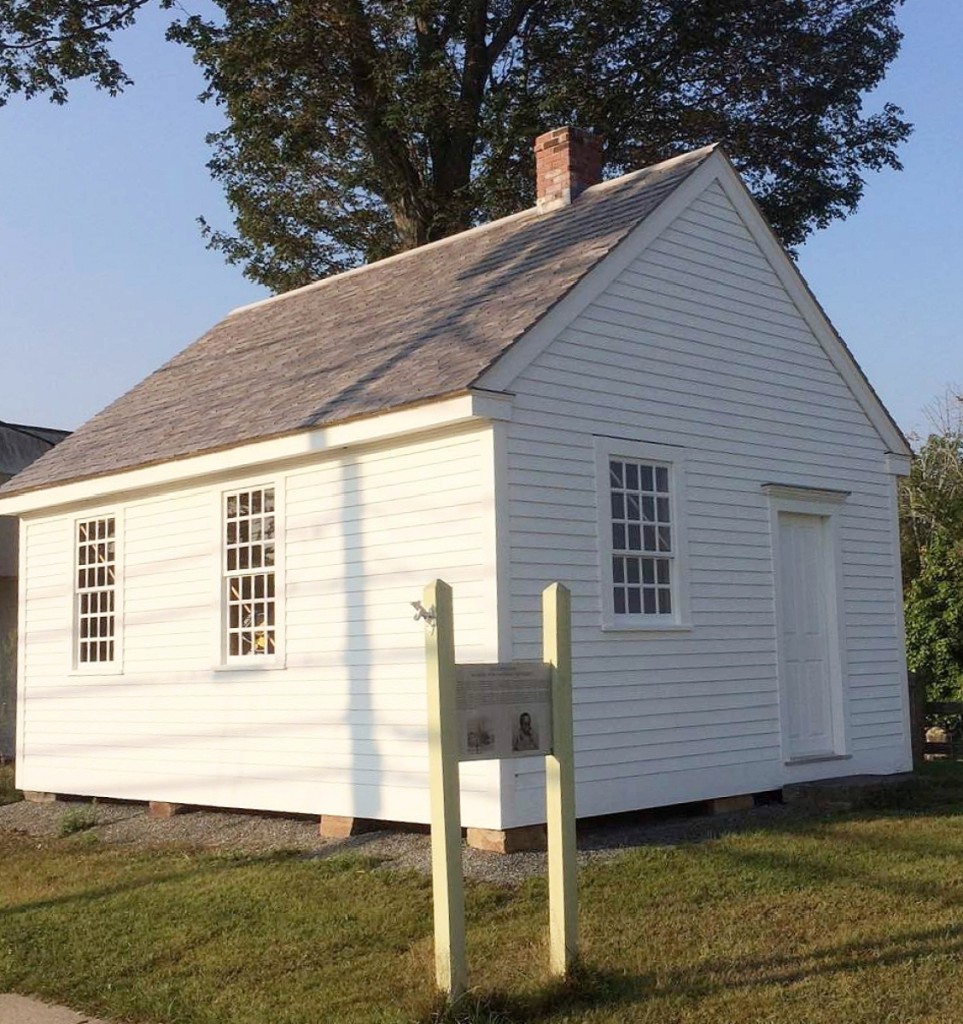COLCHESTER, CONN. – On Friday, September 15, at 4:30 pm, the Colchester Historical Society, in collaboration with the Colchester Historic District Commission, the Colchester Federated Church and the Colchester Hayward Fire Museum, will host a dedication and ribbon-cutting ceremony to commemorate the reconstructed School for Colored Children, as it was originally called, and formally transfer the ownership of the building to the town of Colchester.
Beverly Morgan-Welch, associate director of external affairs at the National Museum of African American History and Culture, Smithsonian Institution, will be the keynote speaker for the dedication event, which will get underway at the Colchester Federated Church. The public will then be invited to the location of the reconstructed school, where the ribbon cutting will take place, followed by catered refreshments at the Colchester Hayward Fire Museum.
The following morning, September 16, from 9 am to noon, the Colchester Historical Society is hosting a “Community Conversation” discussion moderated by Sally Whipple, executive director of the Old State House in Hartford, Conn. Panelists include Beverly Morgan-Welch and Yale historian Peter Hinks, who will discuss the history and future of the Historic School for Colored Children.
The public is invited to participate in the exchange, the first in a series of Community Conversations that will culminate in a long-term exhibit at the Colchester History Museum in 2018. The show is funded in part by the Connecticut Humanities Council.
Bill Treiss of Lost Art Joinery reproduced the original School for Colored Children based on details in an 1836 engraving by John Barber. The project was funded by Arthur Liverant, his sisters Linda Liverant Barger and Abby Liverant Gerrity, and their spouses.
The building will be formally given to the town of Colchester at Friday’s ceremony.
Nearly lost to history, Colchester’s school was researched and championed by town resident and amateur historian Abraham Abdul Haqq. The bylaws of Bacon Academy provided for the funding of this important new school: “Negroes and persons of color shall be provided for in a separate building to be provided by the committee.” Colchester’s school for non-white children opened in 1804. Teachers were African Americans and their salaries, comparable to those of white teachers, were paid by the town. Headed initially by an older African American, Father Graves, the School for Colored Children secured Prince Saunders, originally from nearby Lebanon, Conn., as its first full-time instructor. He taught until 1807. James Quash, whose father, Gideon Quash, was a freed Revolutionary soldier from Colchester, taught at the school for 18 years, until its closing in 1840.
At its height, the School for Colored Children enrolled 30 to 40 children. Antislavery advocate Amos Beman, a respected teacher at the Talcott Street Church in Hartford in the 1830s and later pastor of the Temple Street Church in New Haven, studied at Colchester’s school in the early 1820s. In 1833, the Connecticut General Assembly passed the Black Law, making it illegal for out-of-state African American students to attend school in Connecticut. This law was enacted in reaction to Prudence Crandall admitting African American girls to her school in Canterbury, Conn. The Black Law was repealed in 1839.
In 1840, the School for Colored Children closed. Miss Libby Newton taught the last summer class at the school. Slavery, however, was not abolished in the state until 1848, the year black students were admitted to Bacon Academy.
For more information about the dedication and ribbon-cutting ceremony, the Community Conversation, the upcoming exhibit at the Colchester History Museum or the Colchester Historic School for Colored Children, contact the Colchester Historical Society at mail@colchesterhistory.org.


